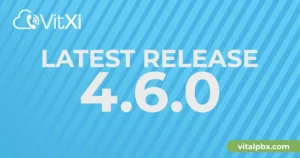Your Call Center Phone Bill Is Too High. Here’s Why.
Is your call center’s monthly phone bill a source of constant dread? If you’re nodding along, you’re not alone. Many businesses, especially those reliant on extensive call center operations, find themselves grappling with unexpectedly high telecommunication expenses. When your call center phone bill is too high, it doesn’t just strain your budget; it can hinder growth, impact profitability, and divert resources from other critical areas. Understanding the underlying reasons for these inflated costs is the first crucial step towards regaining control and optimizing your spending.
In 2025, with technology advancing at a rapid pace, there’s little reason to be overpaying for essential communication services. This comprehensive guide will delve into the common culprits behind exorbitant call center phone bills, explore how outdated systems and inefficient practices contribute to the problem, and ultimately, guide you towards smarter, more cost-effective solutions. Let’s unravel the mystery of your high phone bill and discover actionable strategies to bring those costs down.
The Hidden Culprits: Unmasking What’s Inflating Your Call Center Phone Bill
Often, high call center phone bills aren’t due to a single, glaring issue but a combination of factors, some more obvious than others. Identifying these can feel like detective work, but it’s essential for effective cost management.
1. Outdated Technology: The Price of Sticking with the Past
One of the most significant contributors to a high call center phone bill is reliance on antiquated telecommunication technology. Traditional phone systems, while once the standard, now come with considerable drawbacks in terms of cost and flexibility.
- Legacy PSTN and ISDN Lines: Public Switched Telephone Network (PSTN) lines and Integrated Services Digital Network (ISDN) circuits, such as PRI (Primary Rate Interface) lines, are becoming increasingly expensive to maintain. Telecom providers are phasing out these older technologies in favor of IP-based solutions. As support wanes, the costs for those still using them often rise. You might be paying premium rates for technology that offers fewer features and less scalability than modern alternatives. For more on modernizing, check out our guide on Understanding SIP Trunking and its Benefits for Your Business.
- Physical Hardware Maintenance: Older PBX (Private Branch Exchange) systems often involve bulky, on-premises hardware. This hardware requires regular maintenance, specialist technicians for repairs, and can incur significant costs if parts fail. These maintenance agreements and ad-hoc repair bills add up quickly, contributing indirectly but substantially to your overall communication expenditure.
- Lack of Integrated Features: Traditional systems often require separate services or add-ons for features that are standard in modern VoIP systems, like call recording, voicemail-to-email, or basic analytics. Each add-on can mean an extra line item on your bill.
Why this makes your bill high: You’re essentially paying more for less. The operational and maintenance costs of legacy systems, coupled with their limited feature sets, mean you’re not getting the best value for your money. Transitioning to a modern solution often leads to immediate and noticeable savings.
2. Inefficient Call Routing and Management: Wasted Minutes, Wasted Money
How your call center handles incoming and outgoing calls directly impacts your phone bill. Inefficiencies in call routing and management can lead to longer call durations, unnecessary transfers, and ultimately, higher per-minute charges, especially if you’re on a plan that bills this way.
- Poorly Configured IVR Systems: An Interactive Voice Response (IVR) system that is confusing, lengthy, or doesn’t effectively direct callers to the right department can cause frustration. This leads to callers abandoning and redialing, or being transferred multiple times – each segment potentially incurring costs.
- Suboptimal Call Queuing: Long hold times not only damage customer experience but can also rack up charges, particularly if you’re using toll-free numbers where you pay for the inbound call duration. If agents aren’t efficiently managing queues or if staffing levels are inadequate, these costs can escalate.
- Lack of Skills-Based Routing: If calls aren’t routed to the agent best equipped to handle the specific inquiry, it can lead to longer resolution times, repeat calls on the same issue, and internal transfers. Each extra minute and each additional call segment adds to your bill.
- Unmonitored Outbound Dialing: Without proper oversight, outbound dialing practices can become wasteful. This includes dialing wrong numbers, inefficient list management, or agents spending excessive time on unproductive calls.
Why this makes your bill high: Every misdirected call, every unnecessary minute an agent or customer spends on the line due to system inefficiencies, translates directly into higher usage charges. Optimizing call flow isn’t just about customer satisfaction; it’s a core component of cost control. A robust PBX like VitalPBX offers advanced Call Center Features that can streamline these processes.
3. Scalability Issues and Contractual Traps: Paying for What You Don’t Need (or Too Much for What You Do)
Your call center’s needs can fluctuate significantly based on seasonality, marketing campaigns, or business growth. A phone system that isn’t flexible enough to adapt to these changes can lead to substantial overspending.
- Fixed Capacity Plans: Many traditional telecom contracts lock you into a fixed number of lines or channels (e.g., PRI channels). If your peak demand is high, you pay for that capacity year-round, even during slower periods when many lines sit idle. Conversely, if you exceed your contracted capacity, you could face hefty overage charges.
- Long-Term, Inflexible Contracts: Some providers entice businesses with low introductory rates, only to significantly increase prices after the initial term, locking them into expensive, multi-year agreements with severe penalties for early termination. This makes it difficult to switch to a more cost-effective provider or solution when your needs change.
- Hidden Fees and Complex Billing: Telecom bills are notoriously complex. Your high call center phone bill might be inflated by a myriad of hidden fees, surcharges, and taxes that aren’t clearly explained. These can include regulatory fees, service charges, universal service fund (USF) contributions (which can fluctuate), and more. Without careful scrutiny, these can add 10-25% or even more to your baseline service costs. (Source: FCC Consumer Help Center on Understanding Your Phone Bill).
- Paying for Unused Features or Lines: Over time, businesses can accumulate services or phone lines that are no longer needed. Regular audits of your telecom services are crucial to identify and eliminate these unnecessary expenses.
Why this makes your bill high: Lack of scalability means you’re either overprovisioning and paying for unused resources or under-provisioning and incurring penalties. Complicated contracts and billing practices obscure the true cost of your service, making it easy to overpay.
4. Uncontrolled International Calling and Mobile Integration Costs
For call centers with a global reach or a remote workforce, international calling rates and mobile phone usage can be major contributors to a high phone bill if not managed properly.
- High International Call Rates: If your agents frequently make international calls using traditional phone lines, the per-minute rates can be exorbitant. Different countries and regions have vastly different calling rates, and these can quickly accumulate into a shocking sum on your monthly bill.
- Lack of Centralized Mobile Call Management: If your call center agents use personal or company-provided mobile phones for business calls without an integrated system, tracking and controlling these costs becomes a nightmare. Reimbursement policies can be complex, and there’s little oversight on call duration or necessity.
- No Least-Cost Routing for International Calls: Without a system that intelligently routes international calls via the most cost-effective carrier or path (often achievable with VoIP and SIP trunking), you’re likely paying much more than necessary.
Why this makes your bill high: International calls are a premium service on legacy networks. Unmanaged mobile usage bypasses any negotiated rates you might have with your primary telecom provider, leading to unpredictable and often high individual charges. Exploring The Benefits of VoIP for Small and Medium Businesses can highlight how modern systems tackle these international costs.
5. Not Leveraging the Power of VoIP and Modern PBX Solutions
Perhaps the most overarching reason your call center phone bill is too high in 2025 is the failure to fully embrace Voice over IP (VoIP) technology and modern PBX systems like VitalPBX.
- Lower Call Rates: VoIP calls, especially domestic long-distance and international calls, are typically far cheaper than their PSTN counterparts. SIP trunking, which uses VoIP to connect your PBX to the phone network, offers significant cost savings on line rental and call charges.
- Scalability and Flexibility: Modern VoIP PBX systems are inherently scalable. You can easily add or remove lines/users as needed, often through a simple software interface, ensuring you only pay for what you use. This is a stark contrast to the rigidity of traditional systems.
- Rich Feature Set at Lower Cost: Features like auto-attendants, call recording, detailed call analytics, conferencing, and unified communications are often built into VoIP PBX systems or available at a much lower cost than with legacy systems. These features can also improve agent efficiency, indirectly reducing costs.
- Reduced Infrastructure Costs: Hosted or cloud-based VoIP solutions eliminate the need for extensive on-premises hardware and the associated maintenance costs. Even on-premise IP-PBXs are generally more streamlined and cost-effective to maintain than older analog or digital systems.
- Transparent Billing: Reputable VoIP providers typically offer more straightforward and transparent billing, making it easier to understand your charges and identify areas for optimization.
Why this makes your bill high: By not adopting modern VoIP technology, you’re missing out on substantial cost savings, superior features, and greater operational flexibility that directly combat the issues of outdated technology, inefficient routing, and poor scalability.
Strategies to Reduce Your Call Center Phone Bill
Now that we’ve identified the “why,” let’s focus on the “how.” Reducing your call center phone bill involves a strategic approach:
- Audit Your Current Bills and Contracts:
- Gather at least 3-6 months of your phone bills.
- Scrutinize every line item. Question any charge you don’t understand.
- Review your current contracts for terms, conditions, and termination clauses. Note the contract end date.
- Analyze Your Call Patterns:
- Use call detail records (CDRs) to understand call volumes, durations, peak times, and call destinations (local, long-distance, international).
- Identify the busiest routes and the most expensive call types.
- Evaluate Your Current Technology:
- Is your PBX system outdated? Is it still supported?
- Are you using PSTN/ISDN lines where SIP trunks could be more cost-effective?
- Optimize Call Routing and IVR:
- Ensure your IVR is efficient and user-friendly.
- Implement skills-based routing to reduce call handling times and transfers.
- Explore VoIP and Modern PBX Solutions:
- Research reputable VoIP providers and IP-PBX systems like VitalPBX.
- Compare features, pricing models (per-user, per-channel), and scalability.
- Get quotes based on your specific needs and call patterns.
- Negotiate with Providers:
- Armed with your audit and research, negotiate with your current provider or new potential providers for better rates or terms.
- Don’t be afraid to switch if you find a significantly better offer.
- Consolidate Services:
- If you’re using multiple providers for different services (e.g., local, long-distance, conferencing), explore consolidating them with a single VoIP provider for potential bundled discounts and simplified billing.
- Implement Call Monitoring and Training:
- Use call monitoring and analytics to identify areas where agents can be more efficient.
- Train agents on best practices for call handling to reduce call duration.
Frequently Asked Questions (FAQs)
Q1: Why is my call center phone bill suddenly so high?
A sudden spike could be due to several reasons: a promotional rate ending, exceeding your plan’s limits (data or minutes), unauthorized international calls, a billing error, or recent changes in telecom tax regulations. Scrutinize your latest bill against previous ones to pinpoint discrepancies.
Q2: How can I lower my business phone bill for my call center quickly?
The quickest ways often involve identifying and eliminating obvious waste. This includes disconnecting unused lines, auditing for and removing unauthorized features, and checking for billing errors. For more substantial long-term savings, transitioning to VoIP is usually the most impactful step.
Q3: Is VoIP really cheaper for call centers?
Yes, in most cases, VoIP is significantly cheaper for call centers. This is due to lower per-minute call rates (especially for long-distance and international calls), reduced line rental costs through SIP trunking, lower hardware and maintenance expenses (especially with hosted solutions), and the scalability to pay only for what you use.
Q4: What are common hidden fees in call center phone bills?
Common hidden fees include Universal Service Fund (USF) charges, regulatory recovery fees, E911 fees, administrative charges, late payment fees with high interest, and charges for features you didn’t explicitly request or no longer use. Always demand a clear explanation of all fees.
Q5: How does my old phone system make my call center bill expensive?
Older phone systems (like traditional PSTN-based PBXs) are expensive due to higher maintenance costs for aging hardware, costly PRI/T1 line rentals, lack of scalability leading to paying for unused capacity, and often requiring expensive add-ons for features that are standard in modern VoIP systems. Their inefficiency can also lead to longer call times, further increasing costs.
Q6: Can a new PBX system like VitalPBX actually reduce my phone bill?
Absolutely. A modern IP-PBX like VitalPBX is designed for cost-efficiency. It leverages VoIP and SIP trunking for lower call costs, offers scalability to match your needs precisely, includes a rich set of built-in features (reducing the need for extra paid services), and provides better analytics to manage and optimize your call operations.
Take Control of Your Call Center Communication Costs
A high call center phone bill doesn’t have to be a fixed operational cost you grudgingly accept. By understanding the common causes – from outdated technology and inefficient processes to inflexible contracts and unmanaged international calling – you can take targeted action. The telecommunications landscape of 2025 offers powerful, cost-effective alternatives.
Transitioning to a modern VoIP-based PBX system is often the most impactful step towards significantly reducing these expenses while simultaneously enhancing your call center’s capabilities, flexibility, and overall efficiency. Don’t let an inflated phone bill eat into your profits any longer. Investigate your current setup, explore modern solutions, and make the switch to smarter communication.
Ready to see how a modern PBX can revolutionize your call center’s communication and slash those high phone bills?
Download and try VitalPBX today! Experience the difference with a feature-rich, scalable, and cost-effective solution designed for today’s demanding call center environments. Take the first step towards more predictable and manageable communication expenses.




